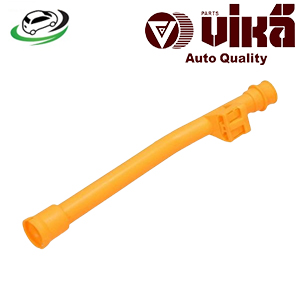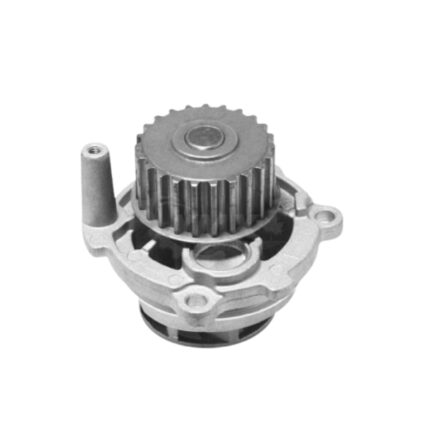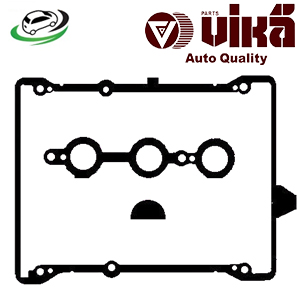Get Valve Cover Gasket Audi A4/A6 Allroad /Cabriolet S4 S6 78198025
The valve cover gasket is a crucial component of an internal combustion engine. It seals the valve cover to the top of the engine cylinder head, preventing oil leaks and maintaining proper pressure within the engine. This detailed guide will cover what a valve cover gasket is, how it works, its benefits, common issues, signs of a failing gasket, and maintenance tips.
What is a Valve Cover Gasket?
The valve cover gasket is typically made of rubber, silicone, or cork and sits between the valve cover and the cylinder head. The valve cover, also known as the rocker cover, encloses the top part of the engine, protecting the camshaft, rocker arms, and valves. The gasket ensures a tight seal, preventing oil from leaking out and contaminants from entering the engine.
How Does a Valve Cover Gasket Work?
The valve cover gasket works by creating a seal between the valve cover and the cylinder head. Here’s a step-by-step explanation of its function:
- Sealing: The gasket fits snugly around the perimeter of the valve cover, providing a barrier that prevents oil from leaking out and dirt or debris from entering the engine.
- Pressure Maintenance: By maintaining a seal, the gasket helps maintain proper pressure within the engine, which is crucial for optimal performance and efficiency.
- Oil Containment: The gasket ensures that the oil circulating within the engine remains contained, preventing it from leaking onto other engine components or the ground.
Benefits of a Valve Cover Gasket
The valve cover gasket offers several critical benefits that enhance engine performance and reliability:
- Prevents Oil Leaks: A properly functioning gasket prevents oil from leaking out of the engine, ensuring that the engine remains lubricated and protected.
- Maintains Engine Pressure: The gasket helps maintain the correct pressure within the engine, contributing to optimal performance and efficiency.
- Protects Engine Components: By preventing oil leaks and keeping contaminants out, the gasket helps protect the internal components of the engine from damage.
- Reduces Maintenance Costs: Preventing oil leaks and maintaining proper engine function can reduce the frequency and cost of engine maintenance and repairs.
Common Issues with Valve Cover Gaskets
While the valve cover gasket is designed to be durable and long-lasting, it can encounter problems that affect its performance. Common issues include:
- Wear and Tear: Over time, the gasket can become brittle and lose its ability to create a proper seal, leading to oil leaks.
- Heat Damage: Exposure to high temperatures can cause the gasket material to degrade, resulting in cracks or breaks.
- Improper Installation: If the gasket is not installed correctly, it can fail to create a proper seal, leading to leaks and other issues.
- Contaminant Buildup: Dirt and debris can accumulate on the gasket, compromising its ability to seal properly.
Signs of a Failing Valve Cover Gasket
Recognizing the signs of a failing valve cover gasket can help prevent more severe engine problems. Common symptoms include:
- Oil Leaks: Visible oil leaks around the valve cover or on other engine components can indicate a failing gasket.
- Burning Oil Smell: A burning oil smell, especially when the engine is running, can signal that oil is leaking onto hot engine components.
- Low Oil Levels: Frequent drops in oil levels can be a sign that oil is leaking from the gasket.
- Engine Misfires: Oil leaking into the spark plug wells can cause engine misfires, leading to poor performance and increased emissions.
- Check Engine Light: In some vehicles, a failing gasket can trigger the check engine light due to sensors detecting oil leaks or related issues.
Maintenance and Replacement
Proper maintenance of the valve cover gasket is crucial for ensuring optimal engine performance and longevity. Here are some maintenance tips:
- Regular Inspections: Periodically inspect the valve cover gasket for signs of wear, damage, or leaks. Check for oil buildup around the valve cover and on other engine components.
- Timely Replacements: Follow the manufacturer’s recommended intervals for inspecting and replacing the valve cover gasket. Typically, gaskets last for many years, but regular checks are essential.
- Use Quality Gaskets: When replacing the gasket, use high-quality, compatible gaskets that meet or exceed the manufacturer’s specifications. Inferior gaskets may not provide adequate sealing.
- Proper Installation: Ensure that the gasket is installed correctly and securely. This includes cleaning the valve cover and cylinder head surfaces thoroughly before installation.
- Monitor Oil Levels: Regularly check the engine oil level and condition. If you notice frequent drops in oil levels or dirty oil, it could indicate a problem with the gasket.
Replacement Procedure
Replacing a valve cover gasket is a task that many DIY enthusiasts can handle, though it requires careful attention to detail. Here’s a general outline of the replacement procedure:
- Preparation: Allow the engine to cool completely. Gather the necessary tools and a replacement gasket.
- Remove the Valve Cover: Disconnect any components obstructing access to the valve cover, such as ignition coils or wiring harnesses. Remove the bolts securing the valve cover and lift it off carefully.
- Clean Surfaces: Thoroughly clean the mating surfaces on the valve cover and cylinder head, removing any old gasket material and debris.
- Install the New Gasket: Place the new gasket onto the valve cover, ensuring it is properly seated and aligned. Some gaskets may require a small amount of gasket sealant, but this is not always necessary.
- Reattach the Valve Cover: Carefully place the valve cover back onto the engine, ensuring the gasket remains in place. Reinstall the bolts and tighten them to the manufacturer’s specifications.
- Reassemble Components: Reconnect any components that were removed to access the valve cover. Start the engine and check for leaks.
Follow us on Facebook for more parts.



